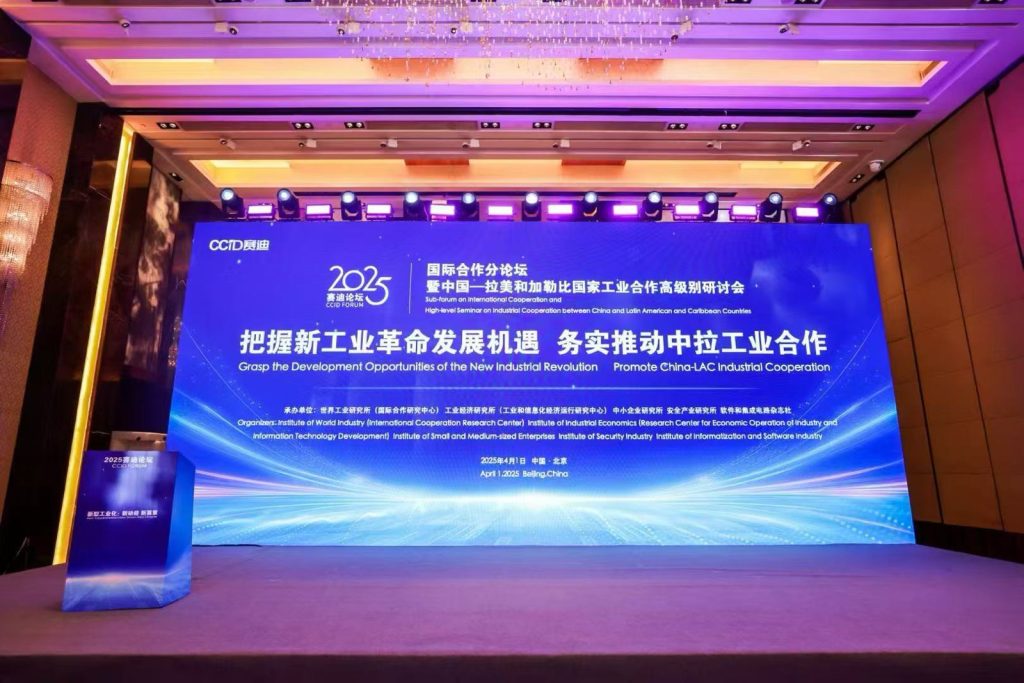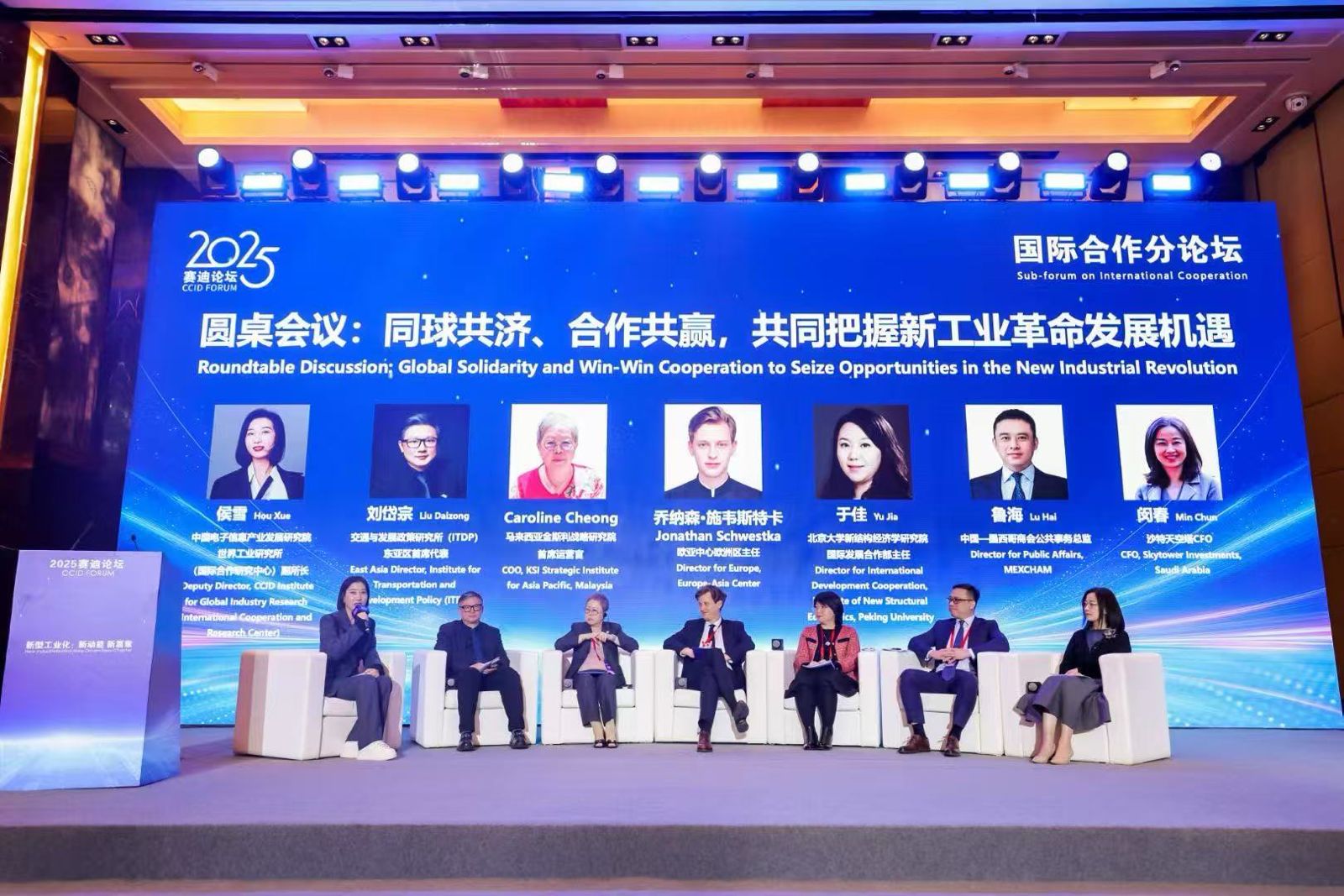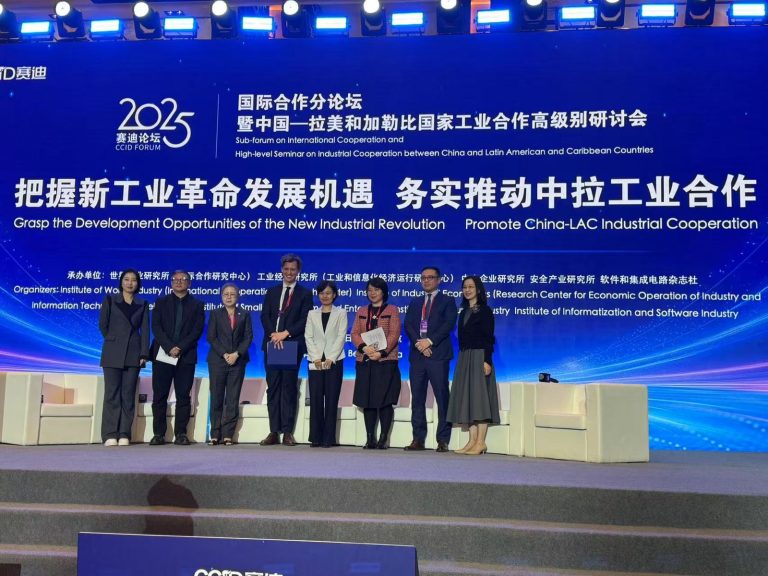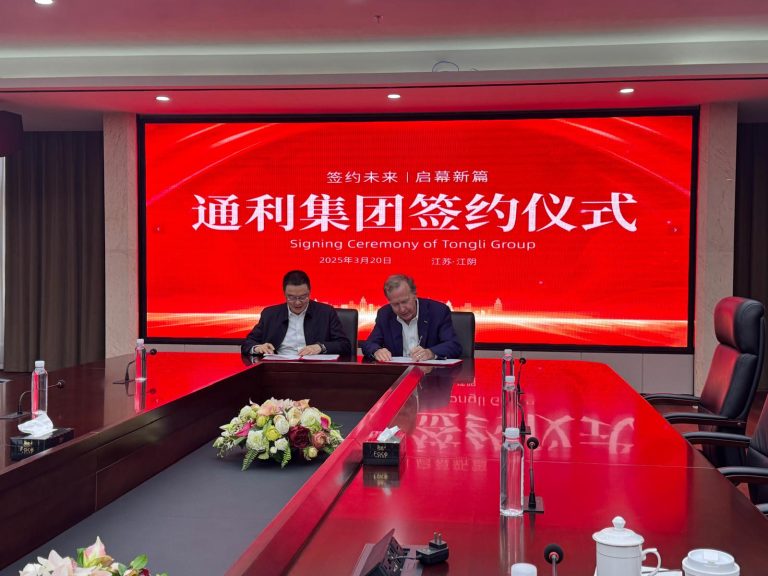Host: China Center for Information Industry Development (CCID)

Topic 1: Opportunities and Challenges for Developing Countries in the New Industrial Revolution
CCID Moderator’s Question:
With the Middle East undergoing an energy transition, how can Saudi Arabia’s emerging sectors drive industrial growth?
Dr. Min Chun (Skytower):
Thank you for the opportunity to participate and share my insights. China’s new industrialization strategy follows a dual approach—leveraging informatization to drive industrialization and vice versa. This approach prioritizes technological advancement, resource efficiency, environmental sustainability, and optimal utilization of human resources.
Due to its unique national conditions, Saudi Arabia’s path to industrialization differs from China’s. However, the overarching goals of workforce transformation and industrial expansion remain the same. Saudi Arabia benefits from two key strengths: its vast oil reserves and its substantial sovereign wealth fund, particularly the Public Investment Fund (PIF), which has grown into a trillion-dollar entity and ranks among the world’s largest.
Saudi Arabia’s Vision 2030 aims to diversify the economy and reduce dependence on oil. To achieve this, the country has strategically aligned its capital resources with its energy transition goals. This is reflected in major investments in electric vehicles, renewable energy, hydrogen energy, and energy digitalization, all of which serve as new drivers of industrial growth.
To provide more context, the Saudi Ministry of Industry and Mineral Resources has outlined a clear set of industrial priorities. For sectors included in this priority list, the government not only offers policy support but also provides direct financial backing and, in some cases, market demand guarantees.
For Chinese and Latin American companies looking to establish a presence in Saudi Arabia or explore collaboration opportunities, I strongly recommend reviewing this list. Companies that align with these priority sectors can benefit from:
- Equity Investment – Funding from entities such as PIF and influential Saudi family investment groups.
- Low-Interest Loans – The Saudi Industrial Development Fund (SIDF) offers loans covering up to 80% of fixed asset investments at competitive interest rates.
In select industries, the Saudi government directly support with market demand for participating enterprises with policies and incentives. However, companies should engage in direct discussions with government agencies to explore specific opportunities. Additionally, Latin American enterprises hold significant potential for collaboration in Saudi Arabia’s energy transition efforts.
Topic 2: Leveraging Competitive Advantages to Drive Industrialization
CCID Moderator’s Question:
How can capital resources and energy transition efforts integrate with emerging technologies to create a new industrial ecosystem?
Dr. Min Chun (Skytower):
As I previously mentioned, Saudi Arabia’s industrial transformation is underpinned by two core strengths: abundant oil resources and a vast sovereign wealth fund. These provide a solid foundation for the country’s energy transition.
Saudi Arabia is fostering a new industrial ecosystem through several key initiatives, including:
- Investing in new energy industries
- Advancing research and development (R&D)
- Strengthening infrastructure
- Localizing renewable energy production
- Driving large-scale technological investment and R&D collaborations
For example, Saudi Arabia has introduced world-class digital solutions for the oil and gas sector, accelerating technological advancements in upstream industries, including oil extraction and gas production processes.
Three Pathways for Enterprises to Enter International Markets
Developing-country enterprises can engage in global collaboration through three primary strategies. These pathways present distinct opportunities for companies to participate in Saudi Arabia’s industrial transformation:
Partnering with Established Companies (“Following the Ship”)
- Smaller enterprises can enter international markets by integrating into the supply chains of companies that have already expanded globally.
- A prime example is Huawei, which has enabled many businesses to tap into global markets by leveraging its expertise and established networks.
Leveraging Established Brands (“Borrowing the Ship”)
- Companies can collaborate with established players through licensing, joint ventures, or strategic partnerships, allowing them to gain market access more quickly.
- This approach enables businesses to leverage their partner’s existing market position and infrastructure, reducing entry barriers.
Establishing an Independent International Presence (“Building the Ship”)
- Companies with sufficient financial strength, technological expertise, and market insight can establish their own R&D centers, production facilities, and sales networks overseas.
- While this approach involves higher investment and risk, it grants greater market autonomy and long-term brand influence.
Each of these strategies is suited to different industries and business sizes. Companies must thoroughly assess market conditions before selecting the most appropriate approach.
At present, Saudi Arabia is actively welcoming foreign enterprises to help expand and enhance its industrial supply chain, making this a prime opportunity for international collaboration.

Topic 3: Identifying Key Opportunities for Developing Countries
CCID Moderator’s Question:
Based on your expertise and industry background, what is one key opportunity that developing countries should focus on? Additionally, can you propose a practical multinational cooperation initiative to facilitate future partnerships?
Dr. Min Chun (Skytower):
Our company specializes in assisting global industrial enterprises in establishing manufacturing operations in Saudi Arabia, with a focus on developing countries’ manufacturing sectors.
We provide businesses with strategic support, including:
- Facilitating direct investment
- Establishing efficient communication channels with Saudi government agencies
- Connecting enterprises with local financial institutions and private investment funds
In addition to helping companies navigate policy frameworks and investment incentives, we assist businesses in securing financing solutions, ensuring smooth market entry.
Recent Success Case: Automotive Industry Expansion
Recently, we have been working closely with a leading Chinese automotive manufacturer to expand its presence in Saudi Arabia, enabling it to integrate more effectively into the global wave of industrial transformation.
A Practical Multinational Cooperation Proposal
To address the moderator’s request for a tangible cross-border cooperation initiative, I propose leveraging Saudi Arabia’s Vision 2030 to:
- Harness the manufacturing expertise of developing countries
- Support Saudi Arabia’s economic diversification efforts
- Collaborate on establishing a more advanced industrial manufacturing ecosystem
By aligning with Saudi Arabia’s industrial development roadmap, we can create mutually beneficial partnerships—enhancing Saudi Arabia’s supply chains while offering developing countries broader market access and industrial growth opportunities.
I am grateful for this insightful discussion and the opportunity to exchange ideas. By capitalizing on the opportunities presented by the new industrial revolution, we can work together to accelerate industrialization in developing countries.
Thank you!



